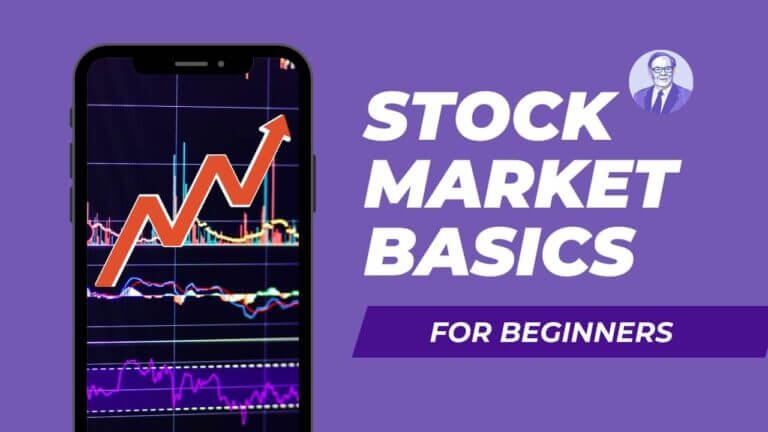Beginner’s Guide to Indian Stock Market Terms
The stock market can be an intimidating and complex concept to navigate, especially for those who are new to it. However, having a basic understanding of the stock market terminology can help simplify things and ensure that you make informed investment decisions. In this article, we will break down the most crucial stock market terminology to help you get started with confidence.
The Basics of Stock Market Terminology
Investing in the stock market can be a frustrating task, especially if you are new to the world of finance. Understanding the terminology and concepts associated with the stock market/share market can help you make informed decisions about your investments. In this article, we will explore some of the basic stock market terminology that every investor should know in their starting phase & to become Stock market ka Commando.
What is a Stock?
A stock, also known as a share or equity, represents ownership in a publicly traded company. When you purchase a stock, you become a partial owner of the company and are entitled to a portion of its earnings and assets. Stocks are typically bought and sold on stock exchanges, where they can be traded by buyers and sellers.
Investing in stocks can be a great way to build wealth over time. However, it is important to do your research and understand the risks associated with investing in the stock market. Stocks can be volatile and their value can fluctuate based on a variety of factors, including economic conditions, company performance, and industry trends.
Types of Stocks
There are two main types of stocks: common and preferred. Common stocks give shareholders the right to vote on company issues and receive dividends. Preferred stocks have a fixed dividend rate and are given priority over common stocks when it comes to receiving dividends and other distributions.
When considering which type of stock to invest in, it is important to weigh the benefits and drawbacks of each. Common stocks may offer more potential for growth, but they also come with more risk. Preferred stocks may offer more stability, but they may not have as much potential for growth.
What is Stock Exchanges
A stock exchange is a marketplace where stocks are bought and sold. The most well-known stock exchanges in the U.S. include the New York Stock Exchange (NYSE) and the Nasdaq Exchange. These exchanges provide a platform for buyers and sellers to trade stocks in a regulated and transparent environment.
Investors can buy and sell stocks on these exchanges through a brokerage account. Brokerage firms act as intermediaries between buyers and sellers, executing trades and providing investment advice.
What is Market Capitalization
Market capitalization is a measure of a company’s total value. It is calculated by multiplying the number of outstanding shares by the current stock price. Companies are often categorized by their market capitalization, which can include small-cap, mid-cap, and large-cap stocks.
Small-cap stocks are typically companies with a market capitalization of less than $2 billion. Mid-cap stocks have a market capitalization between $2 billion and $10 billion, while large-cap stocks have a market capitalization of more than $10 billion.
Investing in stocks with different market capitalizations can help diversify your portfolio and reduce risk. Small-cap stocks may offer more potential for growth, but they also come with more risk. Large-cap stocks may offer more stability, but they may not have as much potential for growth.
Key Stock Market Terms to Know
Understanding the stock market can be a daunting task, but with a little bit of knowledge, anyone can become an informed investor. Here are some key terms to know:
What is Bull and Bear Markets
A bull market is a period of time when stock prices are rising, while a bear market is a period of declining prices. These phrases are often used to describe the overall market trend. During a bull market, investors are generally optimistic and confident in the economy, leading to increased buying activity. Conversely, during a bear market, investors are more cautious and tend to sell off their investments, leading to a decrease in stock prices.
What is Dividends
Dividends are a portion of a company’s earnings that is paid out to shareholders. Companies can choose to pay dividends regularly or sporadically, and the amount can vary depending on the company’s current financial situation. Dividends can be a great source of passive income for investors, and some companies have a long history of paying out dividends consistently.
What is Initial Public Offering (IPO)
An IPO is when a private company becomes public by offering its shares for sale to the public. This allows the company to raise money by selling shares to investors and can result in increased public interest and brand recognition. However, investing in an IPO can be risky, as the stock price can be volatile in the early stages of trading.
What is Market Order and Limit Order
A market order is an instruction to buy or sell a stock immediately at the best available price. This type of order is typically used when an investor wants to execute a trade quickly and is less concerned about the exact price they pay or receive. A limit order, on the other hand, is an instruction that sets a specific price at which the stock should be bought or sold. This type of order is useful for investors who want to control the price at which they buy or sell a stock.
What is Bid and Ask Prices
The bid price is the highest price a buyer is willing to pay for a stock, while the ask price is the lowest price a seller is willing to accept. The difference between the bid and ask prices is known as the bid-ask spread. This spread can vary depending on the stock and the market conditions, and it is important for investors to understand the bid-ask spread before placing a trade.
By understanding these key stock market terms, investors can make more informed decisions and navigate the market with confidence.
Stock Market Indices and Their Importance
Stock market indices are a crucial tool for investors to gauge the performance of the stock market. They provide a snapshot of the overall health of the stock market by tracking the performance of a specific group of stocks.
What is Dow Jones Industrial Average
The Dow Jones Industrial Average, often referred to as simply the Dow, is one of the oldest and most well-known indices in the world. It tracks the performance of 30 large publicly traded companies in the U.S. The Dow is a price-weighted index, which means that the stocks with the highest prices have the most influence on the index’s performance.
The Dow is often used as an indicator of the health of the U.S. economy. When the Dow is up, it is generally seen as a positive sign for the economy, as it indicates that the companies represented in the index are performing well.
What is S&P 500
The S&P 500 is an index that tracks the performance of 500 large publicly traded companies in the U.S. It is often used as a benchmark for the overall performance of the stock market. Unlike the Dow, the S&P 500 is a market-cap weighted index, which means that the stocks with the highest market capitalizations have the most influence on the index’s performance.
The S&P 500 is considered to be a more accurate representation of the overall stock market than the Dow, as it includes a larger number of companies and is weighted based on market capitalization rather than stock price.
What is NASDAQ Composite
The NASDAQ Composite is an index that tracks the performance of all the companies listed on the NASDAQ stock exchange. It is often used as a benchmark for the technology industry, as many of the companies listed on the NASDAQ are technology companies.
The NASDAQ Composite is a market-cap weighted index, like the S&P 500. It is considered to be a good indicator of the performance of the technology industry, as it includes all of the major technology companies that are listed on the NASDAQ.
What is Global Stock Market Indices
There are numerous stock market indices around the world, which can help investors gain insight into how different economies are performing. Examples include the Nikkei in Japan, the FTSE 100 in the UK, and the DAX in Germany.
The Nikkei is Japan’s primary stock market index, tracking the performance of the country’s largest companies. The FTSE 100 is the primary stock market index in the UK, tracking the performance of the 100 largest companies listed on the London Stock Exchange. The DAX is Germany’s primary stock market index, tracking the performance of the 30 largest companies listed on the Frankfurt Stock Exchange.
Overall, understanding stock market terminology can help you make informed investment decisions and feel more confident in navigating the complex world of the stock market. Whether you’re just starting out or have been investing for years, keeping up with the latest trends and using these key terms can help you stay ahead of the game.
Conclusion
Investing in the stock market can be a rewarding experience, but it is important to understand the terminology and concepts associated with the stock market. By doing your research and staying informed, you can make informed decisions about your investments and build a strong portfolio over time.
These sinuses are lined with cells that aid filter and also trap potential unsafe compounds, such as germs or viruses, that might be uromexil forte present in the lymph fluid.




